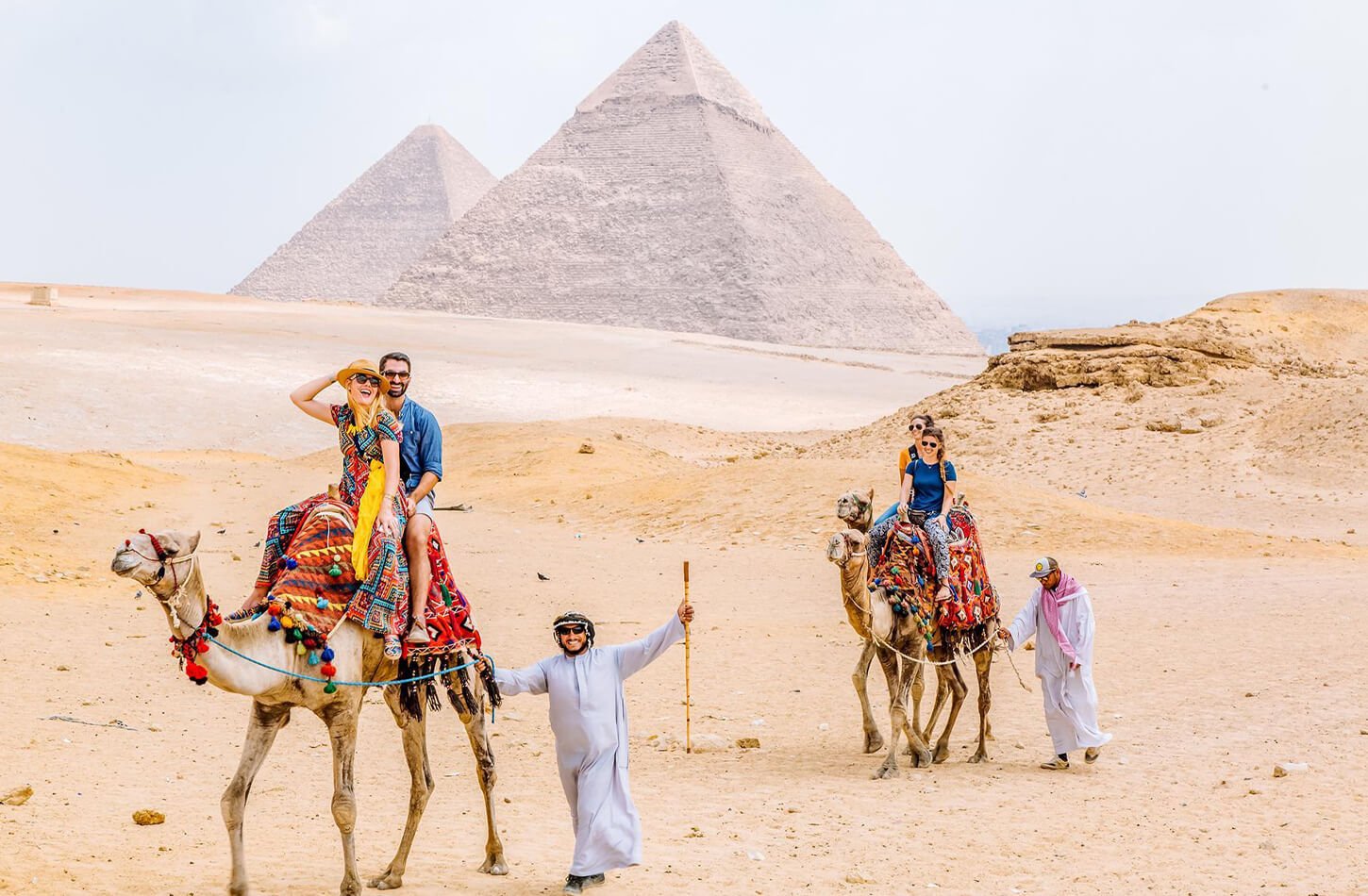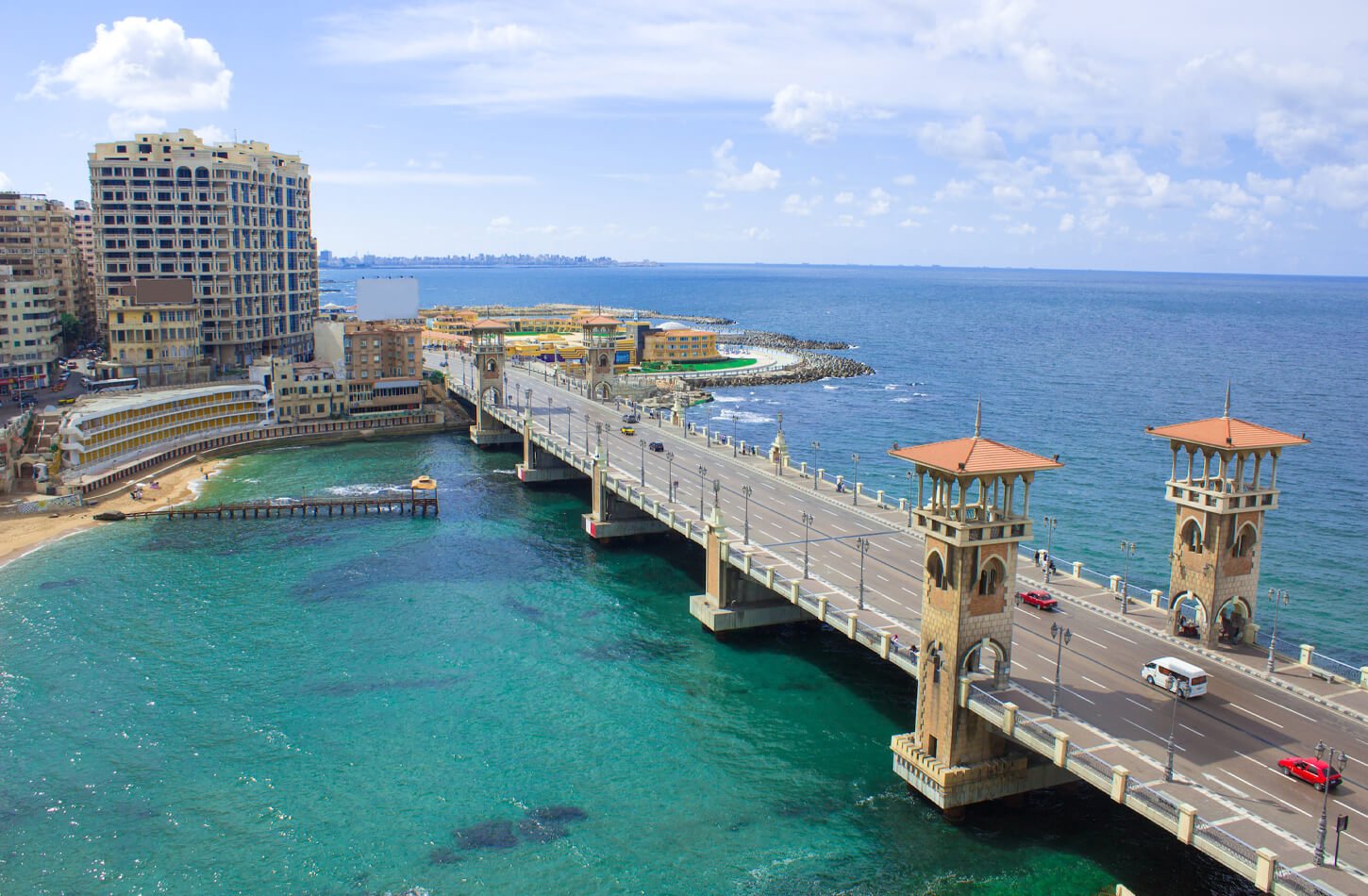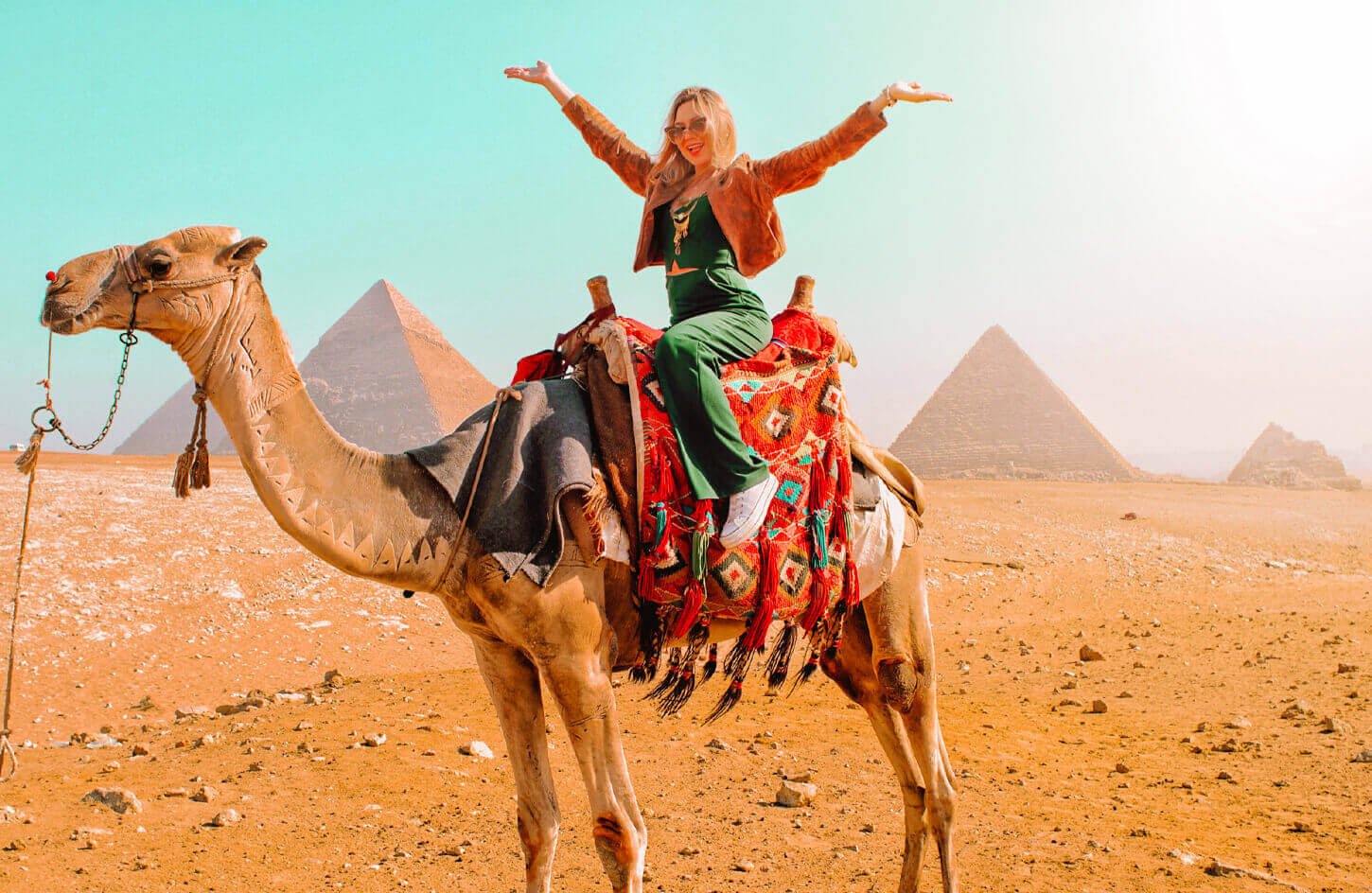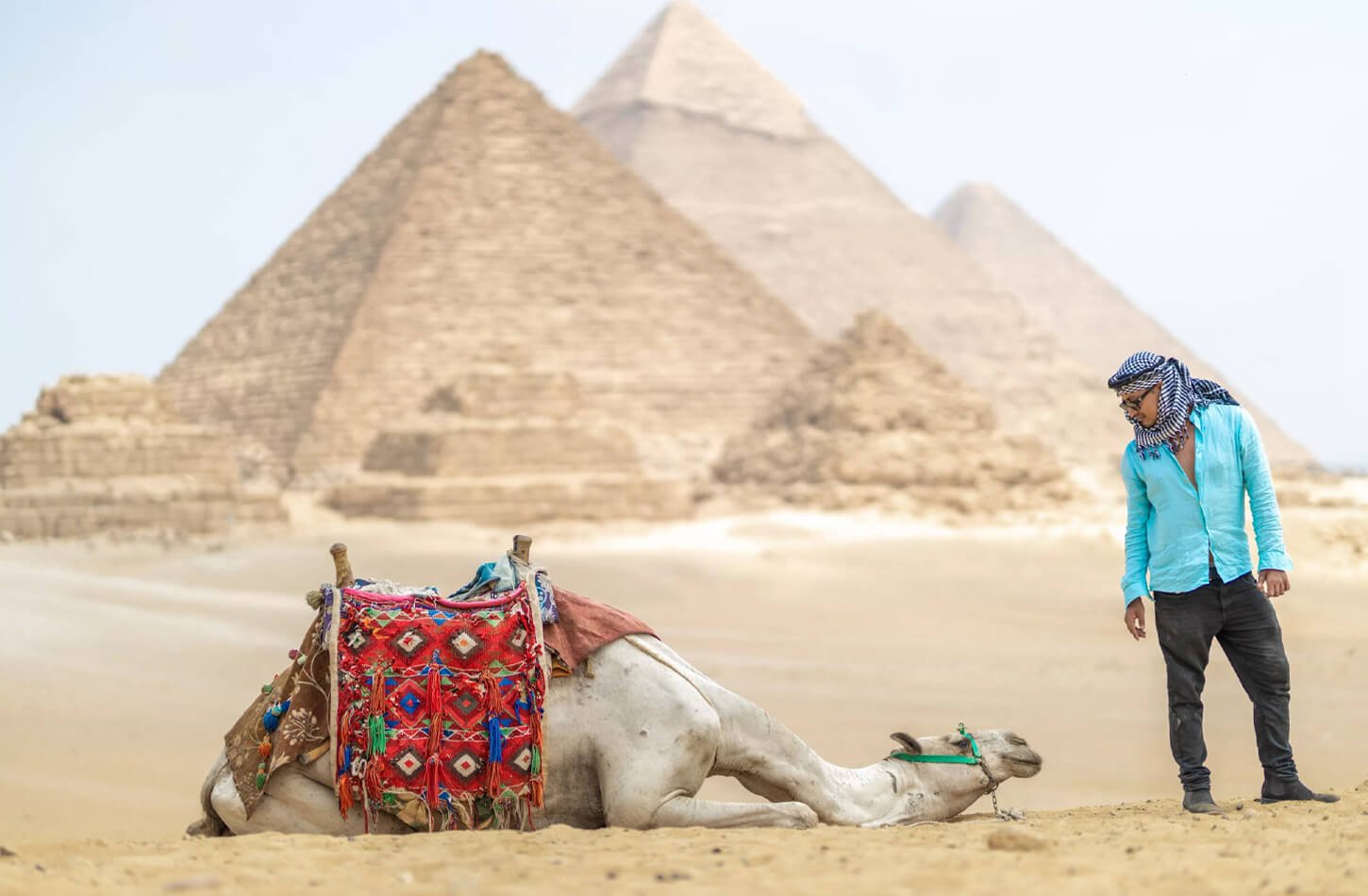Traveling to Egypt during Ramadan is a special chance to see the heart of Egyptian culture. In 2024, there was a 5% increase in tours compared to 2023. This shows more people are interested in Egypt’s Ramadan experiences.
During Ramadan, the ninth month of the Islamic calendar, people fast, pray and come together. This is very important for the 97% of Egyptian Muslims who take part. From March 10 to April 9, 2024, cities like Cairo are full of traditions that mix old customs with new life.
Imagine hearing drummers called “mesharati” waking people up for early meals. At sunset, a cannon from Cairo’s Citadel signals Iftar, the time to break the fast. This guide will help you understand everything from wearing modest clothes to visiting markets like Khan el-Khalili.
Learn how to respect local customs while enjoying Egypt’s rich heritage. Whether you’re seeing the Pyramids at dawn or joining Iftar, this guide will help. You’ll see how 97% of Muslims come together in faith and kindness. Let’s see how traveling to Egypt during Ramadan can be a memorable journey of shared traditions and vibrant history.
Understanding Ramadan in Egypt: A Cultural Overview
Ramadan is the ninth month of the Islamic lunar calendar. It’s a time when Muslims fast from dawn to sunset. For those visiting Egypt, Ramadan is a chance to see Egypt’s Ramadan traditions up close.
Fasting is key to Ramadan. It helps people become more disciplined and understanding. It also brings people together in the community.
- Iftar cannons: Since the 1800s, a cannon signals sunset in Cairo. This tradition goes back to Mohamed Ali’s rule. It shows Egypt’s Ramadan culture of unity and shared meals.
- Evening life: Markets like Khan El Khalili stay open late. Families make over 40 traditional dishes. From baladi bread to kunafa, it’s a feast of Egypt’s Ramadan traditions.
- Light and giving: Lanterns (fanous), a Fatimid-era symbol, light the streets. Many also give food baskets to the poor. This shows Ramadan’s spirit of giving.
In Egypt, Ramadan mixes old traditions with new ways. Families come together for iftar meals, starting with dates. During the day, streets are quieter. By respecting these customs, visitors can really feel Egypt’s spiritual and social pulse.
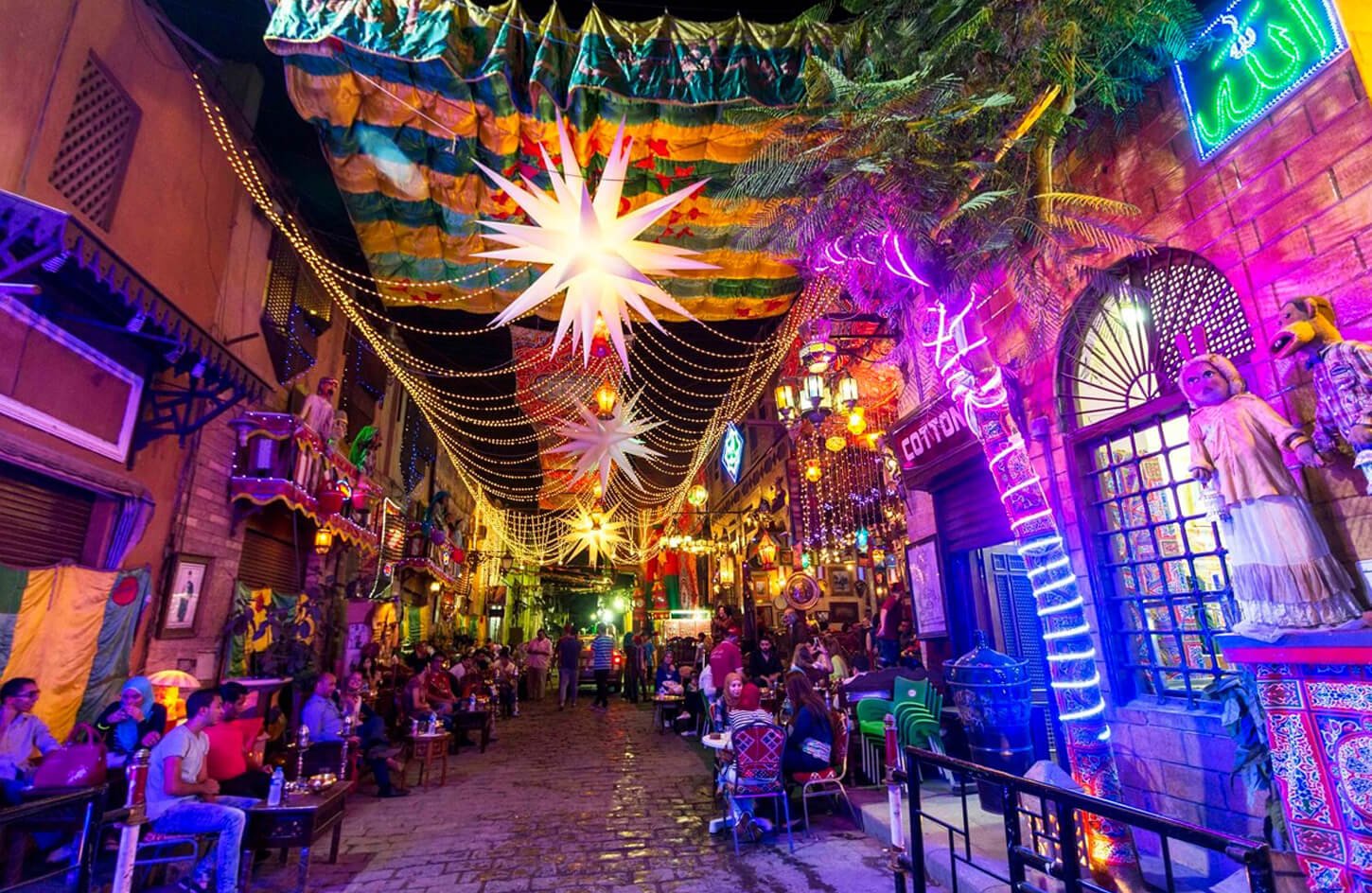
Understanding Ramadan in Egypt: A Cultural Overview
Traveling to Egypt during Ramadan gives a deep look into Egypt’s spiritual heart. It’s more than just fasting. This month is for deep thinking, connecting, and showing pride in Egypt’s Islamic roots. Let’s see how faith changes daily life during this special time.
The Spiritual Significance of Ramadan in Egyptian Culture
Ramadan’s heart is in its spiritual acts, making traditions that show Egypt Ramadan culture:
- Taraweeh Prayers: Mosques are full at night with people reciting the Quran. These prayers, led by scholars, create a special bond in Egypt.
- I’tikaf Retreats: Many stay in mosques for days of prayer and Quran study in the last ten days of Ramadan.
- Charity in Action: Giving food or money to those in need, like free iftar meals at mosques, shows Islamic kindness. It strengthens community ties.
- Historic Traditions: Drummers called the mesharati wake families for suhoor, while cannons signal iftar. These traditions mix old customs with today’s faith.
Evening prayers and finding Laylat al-Qadr, the Night of Power, are the month’s spiritual peak. For visitors, seeing these practices shows how faith and culture blend. It makes Egypt’s Ramadan a living tradition of faith and devotion.
Understanding Ramadan in Egypt: A Cultural Overview
Visiting Egypt during Ramadan is special. It shows the rich Egypt Ramadan culture. From dawn to dusk, life changes in amazing ways.
- Late Nights, Early Mornings Egyptians sleep in later. Offices and shops open an hour later. Sehri meals at 5 AM are a big deal in Cairo and Luxor.
- Evening Festivity Streets come alive after sunset. 31% of Egyptians join Iftar gatherings. Families have big dinners, and 55% invite guests, making neighborhoods lively till midnight.
- Decorations Galore You’ll see glowing fanous lanterns in 75% of homes. Markets like Khan el-Khalili, a UNESCO site, sell festive items.
- Food Markets Alive Markets are full of people buying dates and spices. Tamr (dates) and Subia (ginger tea) are big at Iftar tables.
- Charity in Action Free Iftar tables appear everywhere. 50% of tourists look for this kindness. Mosques see 40% more people for prayers.
- TV & Community Families watch TV series together. This is a modern tradition that blends old and new Egypt Ramadan culture.
- Shortened Workdays Offices work only 6 hours a day. This makes evenings more lively.
- Greetings & Unity “Ramadan Kareem” is heard everywhere. It shows the month’s spirit of sharing. By night, cities like Alexandria and Asyut are full of meals and prayers.
These changes make Egypt Ramadan special. They invite visitors to see a culture where faith and community come together.
Is Traveling to Egypt During Ramadan a Good Idea?
Thinking about visiting Egypt during Ramadan? Here’s what you need to know for a great trip:
- Pros: The best time to visit Egypt during Ramadan lets you see lively traditions. Enjoy nightly Iftar feasts, markets lit with lanterns, and community events. You’ll also see fewer people at places like the pyramids and have fun with locals at night. Don’t miss trying koshari and qamar al-din.
- Cons: Days are quieter with shorter hours and empty streets. Restaurants open at sunset, so plan your meals then. Transport times change, and it can be very hot during the day.
Egypt Ramadan travel tips help make your trip smooth. Don’t eat or drink in public during the day. Book your stay early, near places like Cairo’s Khan El Khalili Bazaar. Don’t miss out on Iftar gatherings or Ramadan Nights festivals.
Ramadan mixes spirituality with celebration, offering a special view of Egypt. For those willing to adapt, it’s a chance to really connect with local life. Just remember to bring patience and curiosity!
What to Expect: Daily Rhythms and Schedule Changes
Planning your Egypt Ramadan travel tips means knowing daily routines change. Businesses adjust to fasting hours, blending tradition with practicality. Here’s what you can expect:
- Government offices open from 9 AM to 2 PM. You might need more time for paperwork.
- Banks offer core services but close early, some at 1 PM during the week.
- Malls and shops open at noon but stay open until 2 AM. It’s great for evening walks.
- Tourist attractions like the Pyramids or Egyptian Museum are open but hours might be shorter.
- Restaurants close during the day but reopen with iftar buffets after sunset. Non-fasters can eat in special areas.
- Cafés close in the afternoon but come alive at night. Try a qamar el-deen apricot drink.
- Transport services are available but have fewer daytime routes. Night buses and taxis are more common after sunset.
Egypt Ramadan travel restrictions are few, but being flexible is important. Evening crowds grow after sunset as families meet. Book iftar spots early. Use the day for sightseeing at places like the Giza Pyramids or Luxor’s temples. It’s cooler and less crowded.
Always check times with your hotel or local guides. Embracing these changes lets you see Egypt’s lively night life.
What to Expect: Daily Rhythms and Schedule Changes
Traveling to Egypt during Ramadan means adjusting to new transportation patterns. Mustafa Seif of Cairo Transport & Touring says rush hour starts 30 minutes before sunset. Streets become very busy then. Here’s how to deal with Egypt’s Ramadan travel rules:
- Rush Hour Chaos: Don’t drive 45 minutes before Iftar. Cairo’s 6th of October Bridge and Alexandria’s Corniche get very crowded. Plan to travel twice as long as usual.
- Public Transport Cuts: Buses and trains run less during the day, by 40%. Metro services go longer into the night after Iftar, until 11PM. Check the official Egyptian National Railways website for times.
- Taxi Availability: Fewer taxis are out between 11AM-3PM. Prices go up by 50% after sunset because more people need rides. Book through Uber Egypt’s Ramadan Express service.
- Intercity Journeys: Night buses from Luxor to Cairo have 2 extra trips after Iftar. Look at Nile Rail’s updated schedule for daytime service cuts.
- Airport Transfers: Add 1.5 hours to your travel time for flights before sunset. Cairo International Airport’s shuttle buses stop 2 hours before Iftar. Arrive early.
- Private Transport: Book private cars with licensed companies like Nile River Tours. Many offer sunset-friendly pickup times.
- Navigation Tech: Turn on Waze’s “Ramadan Mode” for live traffic updates. Google Maps now shows Ramadan-friendly routes.
Always check for schedule updates 48 hours before you travel. Egypt’s transport systems focus on local needs during Ramadan. Being flexible helps you have a smoother trip.
What to Expect: Daily Rhythms and Schedule Changes
As daylight fades, Egypt’s cities come alive. They show off Egypt Ramadan experiences and Egypt Ramadan traditions. The evenings are filled with joy and community. Here’s how to dive into the magic:
- Iftar Gatherings: Join families and friends for dates, soup, and dishes like foul or ta’meya. You can find these at restaurants, street stalls, or in markets.
- Fanoos Lanterns: Copper lanterns with Islamic patterns light up streets. They symbolize faith and joy, just like in medieval Cairo.
- Night Markets: Stalls are full of kuwaity cookies, basbousa pastries, and festive decor. Bargaining for lanterns or textiles is fun.
- Live Performances: Whirling dervishes, puppet shows, and mawlid folk songs fill plazas and hotel courtyards. They mix old and new art.
- Ramadan Tents: Luxury hotels have grand buffets with live music. Modest kheyam in Khan El Khalili bazaar offer mint tea and khishk bread.
- Taraweeh Prayers: Watch congregational prayers at mosques like Al-Azhar. Worshippers recite Quranic verses under the stars.
- 24/7 Bazaars: Grocers, souvenir shops, and shisha cafes are open all night. They keep the city alive.
- Suhoor Vigils: At midnight, bakeries deliver fresh baladi bread. Street vendors sell honey-soaked konafa for the final pre-dawn meal.
These evenings mix sacred rituals with social fun. Nightfall is the heart of Egypt Ramadan traditions. It’s a time when every lantern flicker and dish clatter tells a story older than the pyramids.
Essential Etiquette Tips for Travelers During Ramadan
Traveling to Egypt during Ramadan is a unique experience. But, following some tips helps you respect local customs. Egyptians deeply value this holy month. Mindful behavior lets you blend in and enjoy their warmth.
- Avoid eating, drinking, or smoking in public spaces during daylight. Most hotels provide private areas for tourists to refresh discreetly.
- Dress modestly—cover shoulders and knees—to show respect. Opt for lightweight, breathable fabrics that align with local norms.
- Be patient with service staff; many are fasting and may work slower as they prepare for iftar. A smile goes a long way.
- Keep noise low during the day. Many Egyptians focus on prayer or rest, so loud conversations or music might disrupt their routine.
- Learn phrases like “Ramadan Kareem” to greet locals. Sharing a simple “thank you” in Arabic (shokran) also builds connection.
- Respect prayer times. Avoid blocking pathways to mosques during the five daily prayers, specially as the first call to prayer begins before sunrise.
- If invited to an Iftar, accept the offer. It’s a cherished honor, and bringing a small token like sweets or dates is thoughtful.
- Watch for evening energy. The hours after sunset buzz with activity, so plan meals and exploration then to align with local rhythms.
- Ask questions about traditions. Egyptians often enjoy sharing stories about Ramadan’s significance, like the nightly Quran recitations or the crescent moon sightings marking the month’s start.
- Stay flexible. Schedules shift daily, and businesses may reopen later at night. Embrace the rhythm of the day!
Traveling to Egypt during Ramadan is rewarding when you honor these guidelines. Small gestures of respect deepen your connection to the culture and its people. This makes your visit unforgettable.
Must-Experience Ramadan Traditions in Egypt
Joining Iftar during your visit to Egypt is a highlight of the Egypt Ramadan experiences. This daily ritual brings together faith, family, and community in ways unique to this holy month. Here’s how to immerse yourself in these timeless Egypt Ramadan traditions:
- …
- Start with Dates: Break your fast as locals do—by eating dates and water, a practice rooted in the Prophet Muhammad’s tradition. This simple act symbolizes compassion and humility.
- Feast at Communal Tables: Discover “Maedat Al-Rahman” (Merciful Tables) where restaurants and individuals set up street-side buffets, offering free meals to anyone in need. This generosity embodies the month’s charitable spirit.
- Explore Iftar Buffets: Hotels and eateries host lavish spreads featuring ful medames (fava bean stew), lamboush bread, and apricot juice. Joining these meals lets you taste regional specialties like qatayef (stuffed pancakes).
- Witness the Cannon Signal: At sunset, listen for the cannon fired from Cairo’s Citadel—the same tradition since the Mamluk era. Locals cheer as it echoes through streets, signaling the start of Iftar.
- Join Evening Walks: After eating, stroll markets like Khan el-Khalili to see lantern-lit streets. Kids carry colorful fanous lanterns, a centuries-old symbol of hope and renewal.
- Respect Prayer Times: Families pray Shukran after eating. Wait quietly during these moments and avoid loud noises.
- Share in Charity: Participate in community efforts by donating to food drives or helping serve meals at public tables. This aligns with the month’s focus on generosity.
- Dress Modestly: Cover shoulders and knees when attending local gatherings. Locals families may invite you to their homes—accepting offers deepens your cultural connection.
Must-Experience Ramadan Traditions in Egypt
As dawn breaks, Egyptians come together for suhoor. This meal is a key part of Ramadan in Egypt. It’s a time for food and community, giving visitors a glimpse into Ramadan culture.
Suhoor: The Pre-dawn Meal
- 1. Fueling body and soul: Suhoor meals like ful medames (stewed fava beans) and taameya (Egyptian falafel) give energy. It’s a mix of practical and spiritual, important in Egypt’s Ramadan.
- 2. Timing the meal: Eaten just before sunrise, often at 4 or 5 AM. It matches the moon’s phases, a tradition in Egypt’s Ramadan culture.
- 3. The mesharati’s drum: Drummers (mesharati) used to wake people with beats. Though rare now, it’s a piece of Egypt’s ancient Ramadan.
- 4. Night markets and cafes: Places like Cairo’s Khan el-Khalili bazaar are open all night. Try kunafa or atayef (stuffed pancakes) with mint tea. It’s a taste of local customs.
- 5. Family and friends: Suhoor meals are shared with loved ones. Cafés are filled with laughter, showing the social side of Ramadan in Egypt.
- 6. Spiritual preparation: Many read Quran verses or pray before eating. This connects the meal to faith, setting a disciplined tone for the day.
- 7. Nightlife’s peak: Streets are lively until dawn. Markets (fanous) and vendors sell dates. Alexandria’s Corniche is full of food stalls and music.
- 8. A traveler’s must: Join locals for suhoor to see the kindness behind fasting. It’s a quiet moment before the lively iftar gatherings.
Experiencing suhoor shows a side of Ramadan few see. Its simplicity and sincerity show how Egyptians keep their bodies and spirits strong during Ramadan.
Must-Experience Ramadan Traditions in Egypt
As dusk falls, Cairo’s streets light up with fanous lanterns. These lanterns are a symbol of Egypt’s Ramadan culture. They turn cities into magical places. Here’s how these lanterns make Ramadan special:
Ramdan Lanterns (Fanous) and Decorations
- Centuries-Old Craft: The fanous tradition started over 1,000 years ago. It guided worshippers to evening prayers. Now, they symbolize hope and community during Egypt Ramadan traditions.
- Artisan Mastery: Skilled artisans make lanterns from tin, copper, and stained glass. They mix Islamic patterns with ancient Egyptian symbols. Each lantern is unique, showing Egypt Ramadan culture.
- Modern Twists: Modern electric lanterns have cartoon characters or local celebrities. They mix old and new in creative ways.
- Where to Find Them: Khan el-Khalili market in Cairo is full of glowing lanterns. Vendors sell small souvenirs, and shops have big lantern installations.
- Symbols of Light: The fanous’s light guides us, like the journey of self-reflection in Egypt Ramadan traditions.
- Decorative Magic: Homes and shops also light up with crescent moons, stars, and banners. They turn neighborhoods into colorful displays of faith and joy.
- Perfect Souvenirs: Get a handcrafted fanous from markets like Bab Al-Sha’riya. It’s a memory of your time in Egypt’s Ramadan culture.
- Nighttime Spectacle: After sunset, Cairo’s streets are alive under the lanterns. Go to Islamic Cairo to feel the month’s spirit.
From historic lanterns to lively markets, these decorations show the beauty of Egypt Ramadan traditions. Explore Cairo’s lit-up areas and take a piece of this magic home.
Must-Experience Ramadan Traditions in Egypt
One of the most cherished aspects of Egypt Ramadan traditions is the array of dishes. These dishes make breaking fast a celebration. Every bite tells a story of culture and community. Try these must-have foods during your Egypt Ramadan experiences:
- Kunafa: Crispy pastry layers filled with cheese or nuts, drenched in syrup—often the star of Iftar tables.
- Qatayef: Folded pancakes stuffed with cream or nuts, fried or baked, then drizzled with sugar and syrup.
- Amar El Din: Dried apricot drink, cooling and hydrating after a day’s fast.
- Khoshaf: A dried fruit compote with rose water, served first at Iftar to ease digestion.
- Molokheya: Creamy jute-leaf soup with chicken, a savory staple paired with bread.
- Eid Kahk: Nut-filled cookies dusted with powdered sugar, saved to celebrate the end of Ramadan.
Street vendors, family homes, and hotel buffets all offer these treats. Savor Egypt Ramadan experiences by joining locals at bustling markets or historic Nile-side cafes. Even non-fasters enjoy these dishes, which reflect centuries of tradition. From the first date at sunset to midnight feasts, every meal becomes a shared story of faith and togetherness.
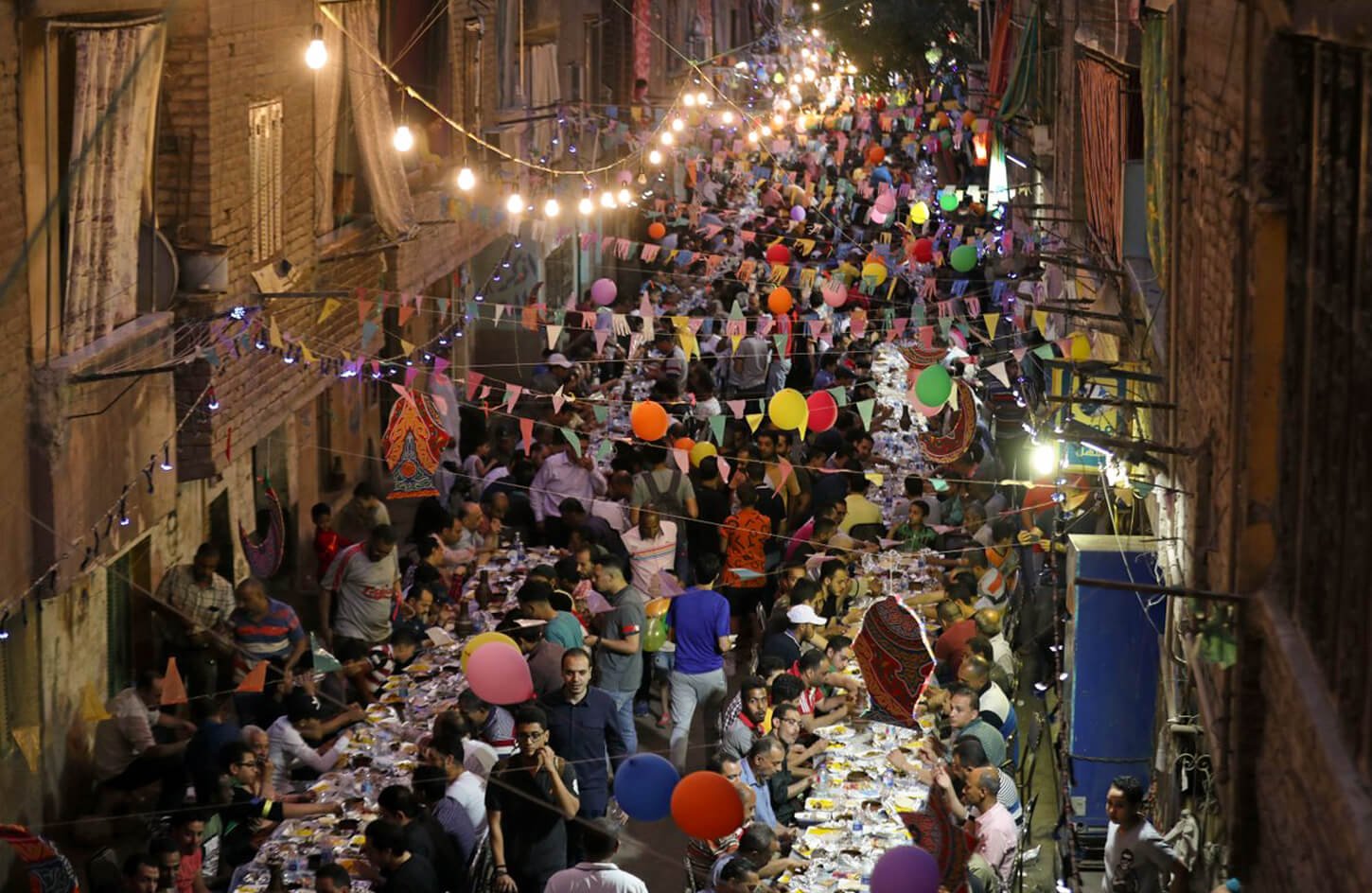
Top Destinations for Traveling to Egypt During Ramadan
Cairo is the heart of Egypt’s culture. It’s famous for its thousand minarets and historic streets. It’s a great place to see Ramadan traditions up close. Here’s how to enjoy it.
Cairo’s Ramadan Atmosphere
Cairo comes alive during Ramadan. Markets and monuments are must-sees. Here are the top spots to dive into the magic:
- Islamic Quarter Magic – Explore the historic district with its 1,000 minarets. Visit Al-Azhar Mosque or the Mohammed Ali Mosque. The area is a UNESCO World Heritage Site.
- Khan el-Khalili Nightlife – This bazaar is lively at night. Buy Fanoos lanterns or try qatayef pastries. You can find dates and sweets until midnight.
- Al-Moez Street Glow – This 10th-century lane is magical at night. The buildings, like the Ibn Tulun Mosque, are lit up. It’s perfect for evening walks.
- Citadel’s Evening Views – The Saladin Citadel offers great views of Cairo at sunset. Listen for the cannon fired daily. It signals Iftar.
- Nile River Celebrations – Enjoy a Nile cruise or join families at Corniche promenades. Restaurants offer Iftar buffets with Quranic recitations.
- Lantern Festivals & Sweets – Shops sell Fanoos lanterns in all sizes. Kids carry them proudly, continuing a tradition.
- Evening Markets & Street Food – Try ful medames or koshari from food carts. Markets like Sayeda Zeinab stay open late. You can find storytellers and artisans.
Cairo’s atmosphere changes during Ramadan. You can see ancient sites by day and join in the celebrations at night. It’s a highlight of any trip to Egypt during Ramadan.
Top Destinations for Traveling to Egypt During Ramadan
Alexandria’s Mediterranean coast is a cool break from Cairo’s busy streets during Ramadan. Unlike Cairo, where traffic gets worse before Iftar, Alexandria is calm. Its sea breezes and relaxed feel make it perfect for those looking for a peaceful Ramadan.
Here, you can enjoy unique sights and traditions. The city offers a chance to see Ramadan in a different light.
- Corniche magic: The waterfront Corniche comes alive at night. Families picnic and walk along the water. It’s a great place to relax under the stars.
- beachfront Iftar: Luxury hotels like Montazah Palace have special tents for Iftar. They offer dishes like fried fava beans and shrimp-stuffed mussels with a view of the sea.
- montazah gardens: Explore this historic park at night. It’s lit up with lanterns and has traditional games like tawla among palm trees.
- seafood specialties: Local restaurants serve Iftar with dishes like grilled octopus and bamyeh (okra stew). These reflect Alexandria’s sea heritage.
- ottoman sweets: Try qatayef filled with cheese or nuts. It’s a sweet treat from the city’s Ottoman past.
- night markets: Visit Manshieh district’s Ramadan bazaars. They sell handmade lanterns and ka’ak cookies until midnight.
- prayer landmarks: Attend sunset prayers at Abu al-Abbas al-Mursi Mosque. It’s a 13th-century site with Iftar gatherings in the courtyard.
- coastal calm: Visit historic sites like Bibliotheca Alexandrina in the mornings. It’s quiet, away from Cairo’s daytime crowds.
Alexandria mixes faith with seaside fun, offering a unique Ramadan experience. Don’t forget to pack light layers for the evening. Arrive early to see the sunset over the Mediterranean.
Top Destinations for Traveling to Egypt During Ramadan
Luxor and Aswan are magical during Ramadan. They mix ancient history with modern traditions. Every corner has a story to tell. Here’s why they’re special during Ramadan:
Luxor and Aswan During the Holy Month
- Night Illuminated Temples: See Egypt’s beauty at Karnak and Luxor temples at night. Their stones shine bright, next to markets where people break their fast.
- Call to Prayer Echoes: Start your day with the adhan from Abi Al-Haggag Mosque. It mixes with the Luxor Temple’s shadow. These sounds set the day’s pace in both cities.
- Nileside Rituals: Watch fishermen on the Nile break their fast. In Aswan, Nubian communities have lantern-lit dinners. They mix Islamic traditions with their own customs.
- Quiet Temple Visits: Visit temples during the day when it’s cooler. Places like Abu Simbel are less crowded. You can explore freely among the pharaohs’ statues.
- Market Magic: Bazaars are alive with dates, fanoos lanterns, and Nubian textiles. In Aswan, markets sell honey-soaked qatayef pastries, a Ramadan treat.
- Nightlife on the Nile: Take evening cruises in Luxor. You’ll see iftar bonfires and ride feluccas under the stars.
- Historic Iftar Experiences: Stay on Nile cruise ships for themed meals. They serve Upper Egypt’s dishes like mahshi vegetables. Hotels also have storytelling nights with Nubian tales.
Visit in spring or autumn for the best weather and culture. These places let you feel Egypt’s heart through its timeless traditions.
Practical Planning Tips: Accommodations and Reservations
Getting the right place to stay in Egypt during Ramadan is key. It makes your trip smooth. Here are some tips to help you avoid problems:
- Book accommodations early. The last week of Ramadan and Eid al-Fitr are busy. Hotels get full quickly. So, book your room 2–3 months before.
- Choose hotels with Ramadan amenities. Pick places that offer Iftar buffets and suhoor meals. This way, you can really dive into the traditions.
- Verify daytime dining access. Make sure your hotel has food options during the day. This is for your comfort and convenience.
- Pre-book popular Iftar spots. Places like the Nile-side Oberoi or Mena House are famous for Iftar. They get booked up months in advance.
- Check for cultural activities. Some hotels have iftar concerts or lantern-making workshops. Ask about these when you book.
- Consider hotel location noise. Hotels near big mosques might be louder, thanks to the call-to-prayer. If you don’t like early noise, choose a quieter spot.
- Lock in tour bookings early.
- Request flexible guides. Private guides can change plans to fit shorter museum hours and prayer times.
- Look for Ramadan packages. Many hotels offer deals that include tours, Iftar passes, and cultural events. Compare these to save time and money.
- Arrange reliable transport. Make sure you have a way to get around in the evenings. Public transport might not run during fasting hours.
By following these tips, you can find great places to stay in Egypt during Ramadan. And you’ll have a stress-free trip into Egypt’s lively Ramadan traditions.
Navigating Sightseeing During Daytime Hours
Traveling to Egypt during Ramadan is special. Morning hours are best for sightseeing. It’s cooler and less crowded then.
Here’s how to make the most of your day before it gets too hot:
Best Morning Activities Before the Heat
- Archaeological Sites: Visit the Pyramids of Giza or Karnak Temple early. Fewer people and cooler air make it perfect.
- Desert Adventures: Go on a dawn Sahara trip. Jeep tours or camel rides show off the desert’s beauty before it gets hot.
- Outdoor Museums: See Luxor’s Open Air Museum in the morning. The light is great for photos of ancient statues and carvings.
- Nile Cruises: Take a sunrise boat ride. The Nile’s breeze and quiet mornings are a nice break from the evening crowds.
- Historic Walks: Walk through Islamic Cairo or Coptic areas before 10 AM. Guided tours help you avoid the heat and crowds.
- Wildlife Watching: Go to Lake Nasser or the Nile Delta at dawn. You’ll see birds like spoonbills and herons.
- Monument Photography: Get the golden-hour light at Abu Simbel or Philae Temple. Professional guides say 6-9 AM is best.
- Local Markets: Khan el-Khalili Bazaar is less crowded before 9 AM. Vendors are open and ready for visitors.
Plan your sightseeing in Egypt during Ramadan for the mornings. This way, you respect local customs and enjoy the sights comfortably. Check attraction hours in advance. Some places close by noon during Ramadan.
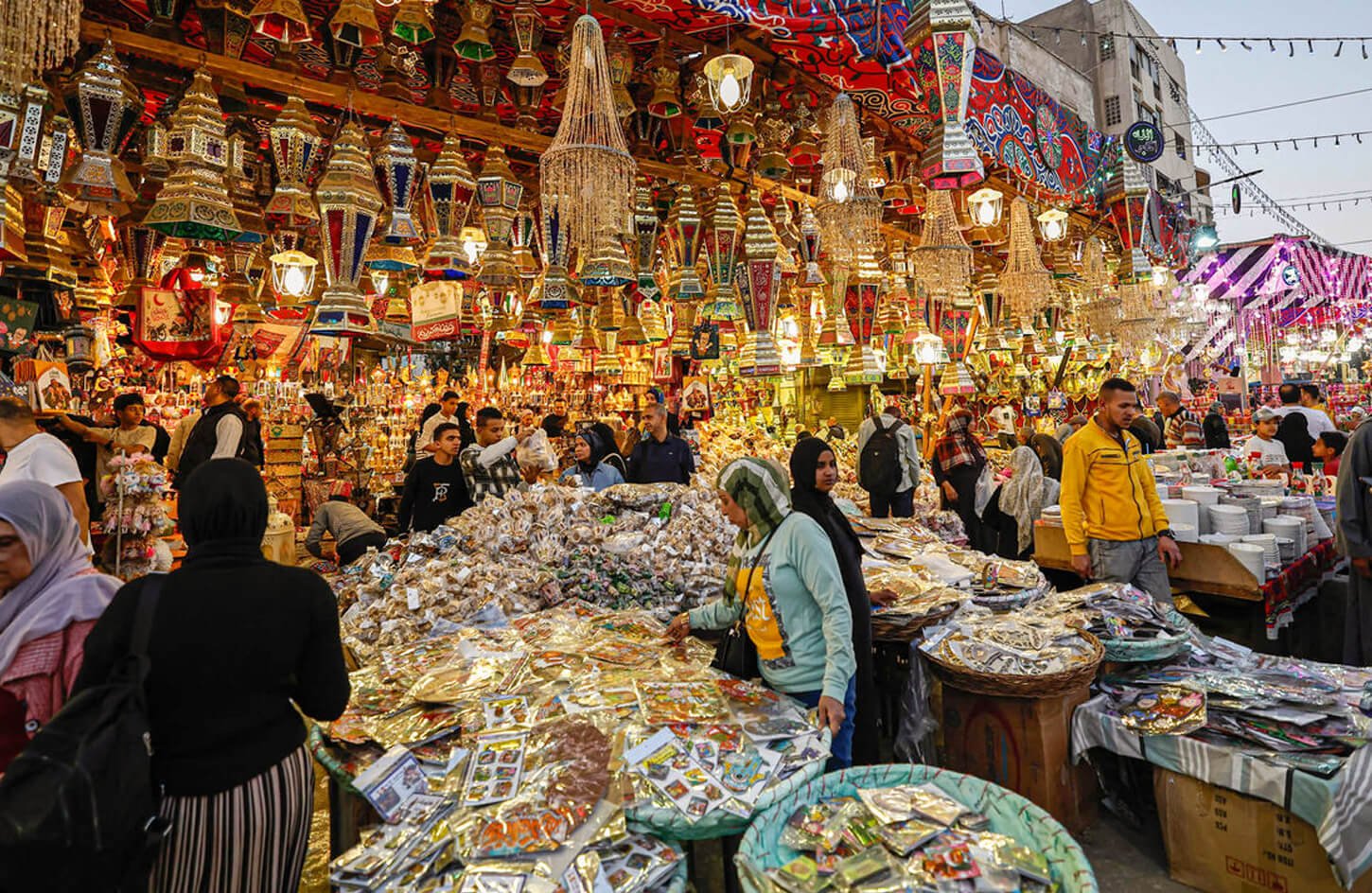
Navigating Sightseeing During Daytime Hours
Make the most of Egypt Ramadan sightseeing by visiting indoor places when it’s hottest. These tips help you stay cool while respecting local customs. Here’s how to see cultural highlights without facing the midday sun:
- Egyptian Museum (Cairo): See 150,000 artifacts, like King Tut’s treasures, in cool galleries.
- Grand Egyptian Museum: Explore pharaonic history at this modern site, open until sunset.
- National Museum of Egyptian Civilization: Find royal mummies and fun exhibits in a big space.
- Luxor Museum: Check out relics from Thebes, like statues and sarcophagi, in cool halls.
- Nubia Museum (Aswan): Learn about ancient Nubian culture with artifacts and multimedia.
- Bibliotheca Alexandrina: See this wonder’s 8 permanent galleries, including rare books.
- Air-conditioned malls: Shop at City Stars or Mall of Egypt and see modern Egyptian life.
- Cultural centers: Watch films or learn about crafts like Coptic weaving.
- Hotel amenities: Relax at poolside lounges or spas before evening iftar events.
These spots let you enjoy Egypt’s culture while fasting. Eat light meals at your hotel until sunset. Many places close an hour early, so check times online first.
Navigating Sightseeing During Daytime Hours
Planning your sightseeing around prayer times is key to making the most of your trip during traveling to Egypt during Ramadan. This holy month, part of Egypt Ramadan culture, brings unique rhythms to daily life. Here’s how to navigate daytime activities thoughtfully:
- Learn the five daily prayers: Fajr (dawn), before sunrise), Dhuhr (noon), Asr (afternoon), Maghrib (sunset), and Isha (evening). These times shift daily, so apps like Muslim Pro or Quran.com can guide your schedule.
- Maghrib marks Iftar. Streets empty briefly as families gather, so time transit or meals during this window. Museums and markets reopen post-sunset, buzzing with energy.
- Avoid mosques during prayer times. For example, Cairo’s Mohammed Ali Mosque at The Citadel closes during rituals. Visit iconic sites like the Citadel’s 275-foot minarets early morning or post-Asr prayers.
- Friday noon prayers (Dhuhr) may reduce staff availability at attractions. Time visits to the Egyptian Museum or Khan el-Khalili bazaar during early morning hours.
- Some sites close for 10-15 minutes during prayers. Check ahead—Luxor’s temples or Abu Simbel may have short closures during Asr prayers.
- Use prayer breaks as downtime. Stroll through Islamic Cairo’s alleys after Dhuhr or relax by the Nile at Roda Island during Asr.
- Embrace the call to prayer as a cultural soundtrack. The haunting adhan echoes across Cairo’s skyline, marking transitions in the day’s rhythm.
Aligning with prayer times ensures respect for traditions while discovering Egypt’s living heritage. Evenings burst with Iftar markets and Taraweeh prayers in Al-Azhar’s historic mosque. By timing visits thoughtfully, you’ll experience both serenity and vibrancy unique to this sacred month.
Packing Essentials for Your Ramadan Trip to Egypt
Getting ready for traveling to Egypt during Ramadan means packing smart. Here are some Egypt Ramadan travel tips to help you be respectful and comfy.
- Modest clothing: Choose loose, light clothes that cover your shoulders, knees, and chest. Wearing loose tunics or long skirts is a good idea. It shows respect and keeps you cool.
- Scarves: Bring a light scarf to cover your hair in mosques or conservative areas. Pick neutral colors that match local styles.
- Reusable water bottle: Carry a refillable bottle to drink water without drawing attention. Don’t drink in public during the day.
- Comfortable shoes: Wear sturdy shoes for walking. Egypt’s night markets and bazaars are lively after sunset, so you’ll be walking a lot.
- Flashlight: A small headlamp is useful for walking in dark alleys at night. It’s great for evening Iftar crowds or night tours.
- Power bank: Charge your devices at night. This way, you won’t run out of battery during late-night activities like Taraweeh prayers or cultural events.
- Arabic phrases: Write down phrases like “Ramadan Mubarak” or “Shokran” (thank you) on your phone or notecards. It’s a nice way to show respect.
- Sun protection: Wear hats, sunglasses, and use SPF 30+ sunscreen. This is important, even more so in warmer months.
- Small gifts: Bring traditional sweets like ka’ak or basbousa to share if you’re invited to an Iftar meal.
- Low-light camera: Use a camera that works well in the dark to capture the beauty of Egypt’s lantern-lit streets and festive markets.
By packing with respect for local traditions, you show you care about the culture. These items help you fit in while enjoying Egypt’s special Ramadan vibe.
Conclusion: Embracing the Magic of Egypt During Ramadan
Traveling to Egypt during Ramadan is a special journey. It mixes old traditions with today’s warmth. The best time to visit Egypt during Ramadan shows a side of the country that few see. It’s a truly enriching Egypt Ramadan experience.
The country’s vibe changes. Streets light up with fanous lanterns on 75% of homes. Markets come alive after sunset. You’ll see 31% of Egyptians sharing iftars, making strong bonds.
50% of tourists find Egypt full of kindness. Stores close briefly at sunset, but people’s hearts are open. This makes visiting truly special.
Nights are the best time. Enjoy suhoor with locals, trying foods like kunafa and katayef. The pyramids and Egyptian Museum are less crowded, perfect for quiet exploration.
Mosques see 40% more people, adding spiritual depth. The Great Sphinx is even more magical.
Plan your trip: Ramadan 2024 starts March 10, ends April 9. Eid celebrations are April 10–12. In 2025, it’s from February 28–March 29. Remember to respect local customs, like not eating in public daylight.
Join evening iftars and say “Eid Mubarak” with the city.
For those looking for a real connection, Ramadan is the time. The Egypt Ramadan experiences here, like date tea or tarab music, show the culture’s heart. Being flexible leads to unforgettable stories. This is more than a trip; it’s a chance to see Egypt’s true soul.
Read our Related Article:

